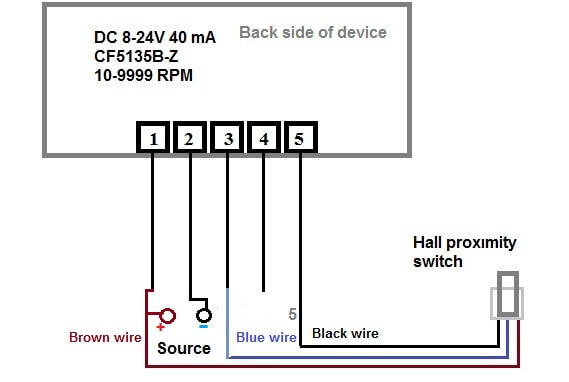These sensors use a Hall effect device to sense the magnetic field. The ones that give a "digital" on/off output, which the tachos generally use, are sensitive to the direction and strength of the field. The chips inside generally want a "north" pole (IIRC) to be presented to their top face and won't respond to a south pole. It's the direction of the field that's important, and they may respond if the magnet is presented in various orientations if there's a field component in the right direction.
Ideally if using one of the common rare earth disc magnets try to mount the magnet and the sensor so they are "face to face" as the magnets are magnetised through their thickness. You will need to experiment to see which face is the right one to work your sensor.
They will be slow to respond to speed changes because probably it counts pulses in a fixed time. So at 1 pulse per rev and 60 rpm, if you wanted to get a 1 rpm resolution you'd need to wait a minute to get 60 pulses. Alternatively they may measure the time between pulses and take the reciprocal, but even then they will average over a number of calculations which takes time, and of course the calculation takes some time too.
John Haine.






